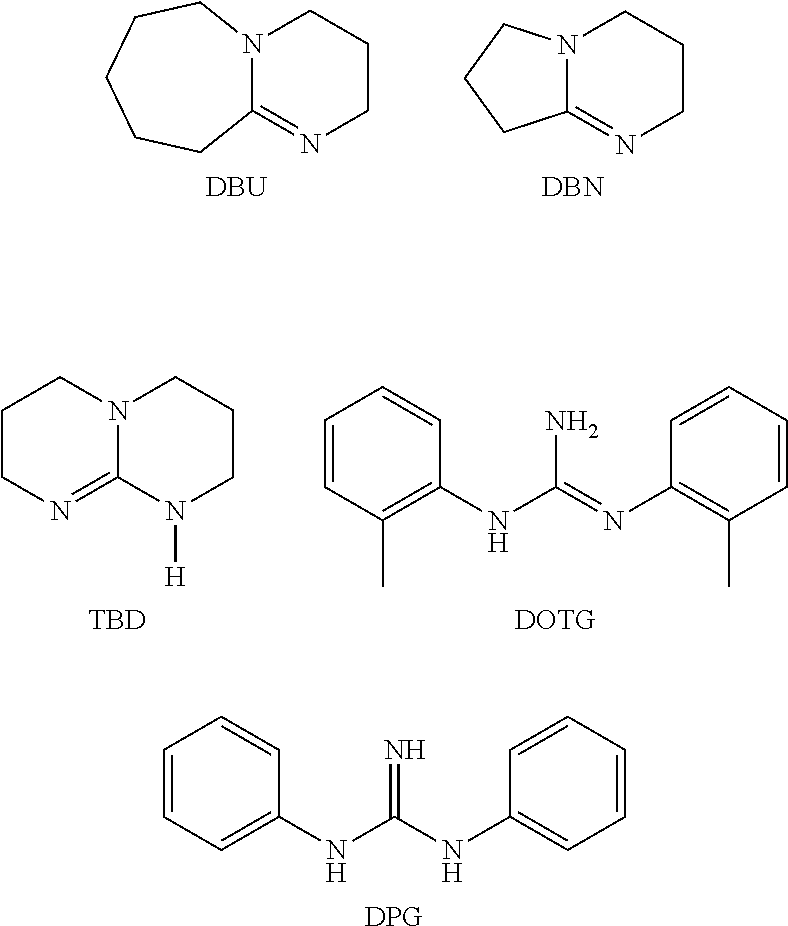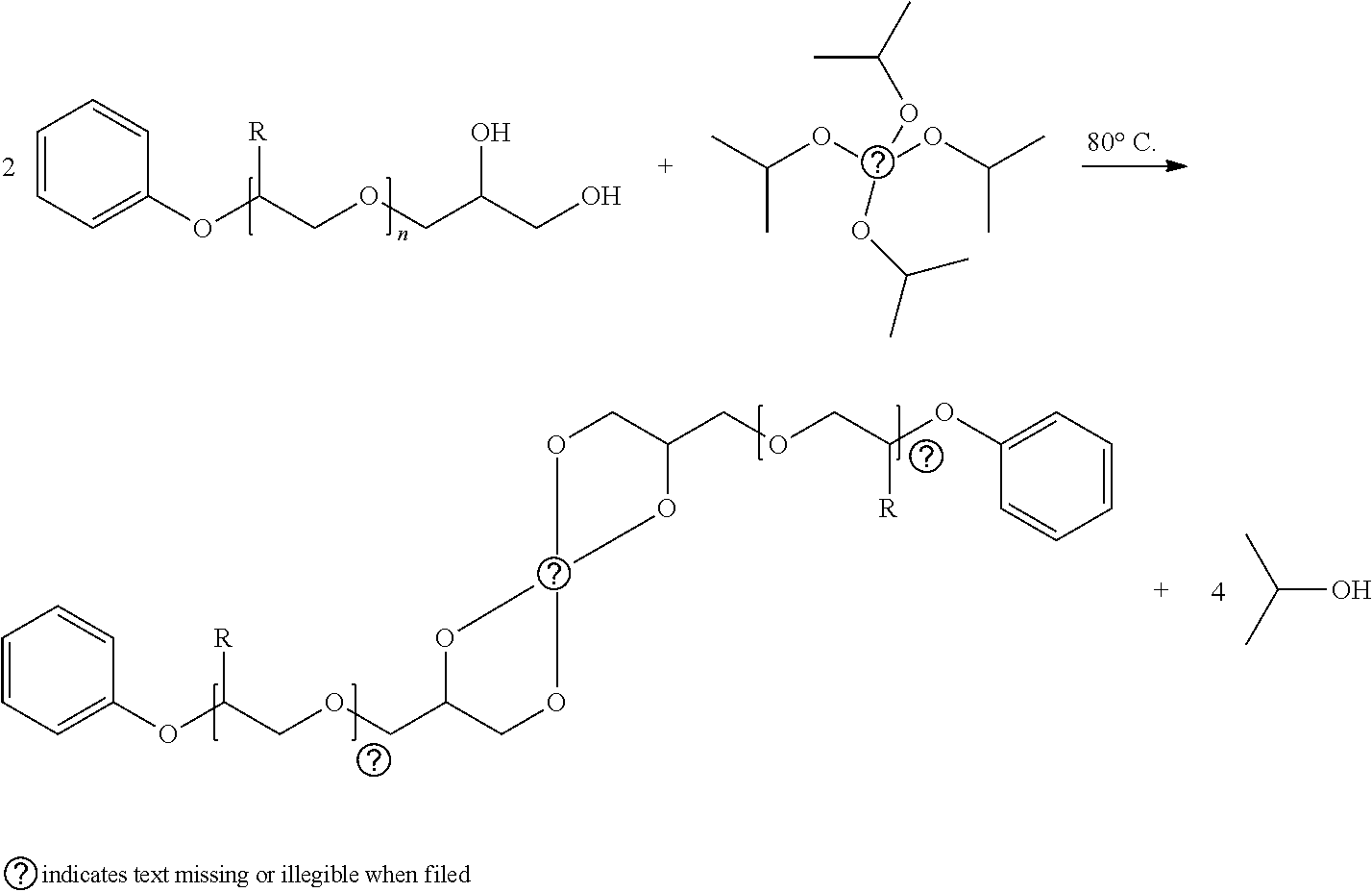Composition for manufacturing vitrimer resins of epoxy/anhydride type comprising a polyol
a technology of epoxy/anhydride and polyol, which is applied in the field of composition for manufacturing vitrimer resins of epoxy/anhydride type comprising a polyol, can solve the problems of inability to recycle or welding, inability to transform or shape soft or hard parts and composites based on thermosetting resins, and inability to recycle or harden. it is easy to store, transport and handle.
- Summary
- Abstract
- Description
- Claims
- Application Information
AI Technical Summary
Benefits of technology
Problems solved by technology
Method used
Image
Examples
example 2
Synthesis of an Epoxy-Anhydride Network in the Presence of 1% of TBD and of Polyol
[0189]Three samples were prepared in a manner identical to the sample of example 1, except that a polyol was added to the reaction mixture, incorporated in liquid form into the anhydride. The Tg and the storage modulus G′ of the materials thus obtained were also measured, and are collated in table 1 below.
TABLE 1Sample2a2b2cPolyolGlycerolGlycerolTMP*mol % OH / epoxy102010Tg (° C.)146144144G′ (MPa)151516.7*trimethylolpropane
[0190]It is noted that these polyols make it possible to slightly increase the storage modulus of the materials, which reflects their crosslinking density, without substantially affecting their Tg. This shows that the polyols have been incorporated into the polymeric network and do not behave like plasticizers, contrary to what might have been expected.
example 4
Synthesis of an Epoxy-Anhydride Network in the Presence of 1% of DBU and of Polyol
[0192]A sample (4) was prepared in a manner identical to the sample of example 3, except that a polyol (TMP) was added in liquid form to the reaction mixture. This material exhibits a Tg of 132° C. and a storage modulus at 200° C. of 12.4 MPa.
example 6
Synthesis of an Epoxy-Anhydride Network in the Presence of 10% of Zinc Acetylacetonate and of a Polyol
[0194]A sample (6) was prepared in a manner identical to the sample of example 5, except that a polyol (TMP) was added in liquid form to the reaction mixture. This material exhibits a Tg of 125° C. and a storage modulus at 200° C. of 11 MPa.
[0195]The Tg and the storage modulus G′ of the materials thus obtained in examples 3 to 6 are collated in table 2 below.
TABLE 2Sample3456Polyol—TMP—TMPmol % OH / epoxy020015Tg (° C.)132132130125G′ (MPa)13.612.413.511
PUM
| Property | Measurement | Unit |
|---|---|---|
| temperature | aaaaa | aaaaa |
| temperature | aaaaa | aaaaa |
| Tg | aaaaa | aaaaa |
Abstract
Description
Claims
Application Information
 Login to View More
Login to View More - R&D
- Intellectual Property
- Life Sciences
- Materials
- Tech Scout
- Unparalleled Data Quality
- Higher Quality Content
- 60% Fewer Hallucinations
Browse by: Latest US Patents, China's latest patents, Technical Efficacy Thesaurus, Application Domain, Technology Topic, Popular Technical Reports.
© 2025 PatSnap. All rights reserved.Legal|Privacy policy|Modern Slavery Act Transparency Statement|Sitemap|About US| Contact US: help@patsnap.com



